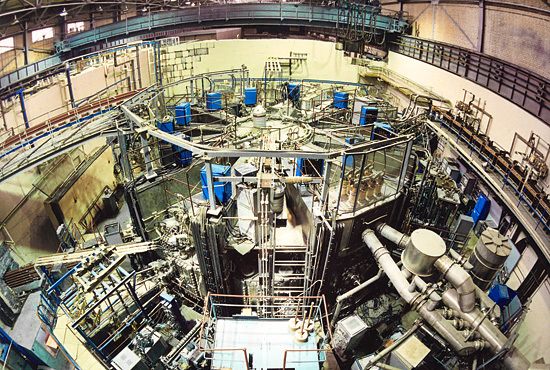Two workers removed 5 tons of copper from a tokamak in Moscow
Moldovans tried to remove the non-ferrous metal from the thermonuclear installation T-15
 Interfax, citing a law enforcement source, reports that two workers removed copper from the unique T-15 thermonuclear installation at the Kurchatov Institute in Moscow.
Interfax, citing a law enforcement source, reports that two workers removed copper from the unique T-15 thermonuclear installation at the Kurchatov Institute in Moscow.From March 3 to March 13, two Moldavian citizens removed copper tires from the installation. The workers hid non-ferrous metal in different places of one of the SIC buildings, in order to then take it outside the organization and sell it. This was noticed by security officers and appealed to the law enforcement agencies. It is believed that employees acted with the help of accomplices, whose identities are now being investigated.
According to some reports, in 10 days 5 tons of copper tires were removed. Per kilogram of copper in reception centers can give 250-300 ₽, that is, workers could earn millions of rubles through dishonest means. Now both visitors are defendants in the criminal case under articles 30 and 158 of the Criminal Code of the Russian Federation.
Tokamak is a toroidal installation for magnetic plasma confinement. Tokamak is a central component of the installation of controlled thermonuclear fusion. This promising technology is often called the future of energy. The Russian (previously Soviet) experimental thermonuclear installation T-15 is one of the largest in the world. The site of the Research Center Kurchatov Institute states that it has the world's largest superconducting niobium-tin toroidal magnet. According to previous data , the plant is scheduled for modernization and commissioning in 2018. Project financing - 2.5 billion rubles. At the same time, Russia simultaneously participates in the international ITER project .
')
On the basis of the T-15, Russian physicists are going to create the first hybrid reactor, which promises to make a real revolution in the power industry, providing fuel for all nuclear power plants in the world. It is proposed to use a thermonuclear neutron for the subsequent nuclear reaction in a blanket (protective layer of the core from escaping particles) to obtain heat and secondary fuel. From metal fluorides uranium-238 or thorium-232, it is possible to obtain new fissionable isotopes and subsequently use them in nuclear reactors. The first projects of hybrid reactors were carried out in 1978, but then there was not enough technical basis for their implementation. According to Academician Yevgeny Velikhov, President of the Kurchatov Institute, today the creation of similar “food factories” for other reactors is already possible.
Source: https://habr.com/ru/post/377415/
All Articles